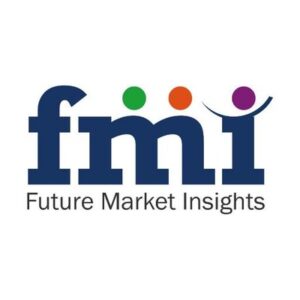The global prescription bottles market is expected to witness steady growth, driven by continuous research and development activities in sustainable packaging, the focus on ease and convenience in handling tablets/pills, and the reduction of medication errors. The market is projected to expand at a value CAGR of approximately 6.0% from 2021 to 2031, reaching millions of units by 2031, according to Future Market Insights (FMI).
Prescription bottles, commonly made of plastic or glass, are cylindrical containers used to store prescribed medications. They come in various shapes, such as square, rectangular, oval, and cylindrical, and are often colored to provide protection against changing weather conditions, especially exposure to sunlight. Common colors for prescription bottles include red, dark green, green, aqua, and cobalt blue.
Amber or orange-colored prescription bottles are popular due to their ability to offer maximum protection to pills at a lower production cost. These bottles typically contain detailed information about the medication, including dosage instructions, timings, and frequency of consumption.
Key trends impacting the growth of the prescription bottles market include the availability of bottles in different colors and shapes for better medication handling, the use of dark-colored bottles for increased protection against photochemical reactions, and the inclusion of attached lids and writable notepaper for easy access and reminders. Writable notepaper allows patients to note the timings or frequency of medication intake, ensuring easy reference.
Request a sample report to validate your market strategies and optimize your business approach @ https://www.futuremarketinsights.com/reports/sample/rep-gb-14179
The demand for prescription bottles is increasing compared to medicine strips due to their inherent advantages. Prescription bottles already contain important information about the medication, eliminating the need for patients to refer to separate prescription papers repeatedly. In contrast, medicine or tablet strips lack attached prescription notes, making them less convenient for patients. Prescription bottles offer ease and convenience in medication administration.
Key Takeaways:
- The global prescription bottles market is projected to grow at a value CAGR of around 6.0% from 2021 to 2031.
- Prescription bottles provide better medication handling and protection against weather conditions compared to medicine strips.
- Dark-colored prescription bottles offer increased protection against photochemical reactions.
- Attached lids and writable notepaper on prescription bottles enable easy access to medication and allow patients to note timings and frequencies of intake.
- Prescription bottles are preferred over medicine strips for their convenience and the already attached medication information, reducing the need for separate prescription papers.
What are the Key Challenges that may restrain the Growth of the Prescription Bottles Market?
The prescription bottles made of glass have high chances of breaking and require secondary packaging with the help of protective packaging for transportation and storage. The plastic prescription bottles are not resistant to long-distance transportation as the crushing rate is high which may cause medication or liquid leakage, microbial contamination of the medicine, etc.
Receive a customized report with actionable market intelligence on trends, drivers, and challenges that drive success in your industry @ https://www.futuremarketinsights.com/customization-available/rep-gb-14179
Competitive Landscape
The following global key players such as
- Amcor Plc
- Berry Plastics Group Inc.
- Gerresheimer AG
- Aptar Group Inc.
- Comar LLC
- Bormioli Pharma Spa
- Plastipak Holdings Inc.
- Origin Pharma Packaging
- C.L. Smith Company
- Clarke Container Inc.
- and Drug Plastics Group.
Key Asian players manufacturing prescription bottles are National Bottle House, Keepet Containers, Raja Tradelinks Private Ltd., Hindustan Products, Ningbo Suncity, Whea-Stone Co., Ltd., and Neutroplast.
What are the Key Opportunities for Prescription Bottles Market?
The majority of the manufacturers have shifted their aim towards the sustainable manufacturing of the product. Therefore, the enhanced use of the paper while manufacturing the prescription bottles can be practiced by the manufacturers which can be easily decomposed with no risk of creating pollution of toxic waste as it eliminates the use of plastic and toxic chemicals and dyes during the manufacturing process for the paper prescription bottles.
Engage in a conversation with our analyst to discuss your unique business requirements and receive customized insights @ https://www.futuremarketinsights.com/ask-the-analyst/rep-gb-14179
Key Segments of Prescription Bottles Market Covered in the Report
Based on the Material:
- Glass
- Plastic
- Paper
Based on the Shape/design:
- Square
- Rectangular
- Oval
- Cylindrical
Based on the Capacity:
- Below 100 ml
- 100 ml to 250 ml
- Above 250 ml
Based on the Application:
- Tablets
- Capsules
- Powders/Granules
- Others (Semi-solid medications, etc.)
Based on the Region:
- North America
- Latin America
- Europe
- South Asia
- East Asia
- Oceania
- Middle East & Africa
About FMI
Future Market Insights, Inc. (ESOMAR certified, Stevie Award – recipient market research organization and a member of Greater New York Chamber of Commerce) provides in-depth insights into governing factors elevating the demand in the market. It discloses opportunities that will favor the market growth in various segments on the basis of Source, Application, Sales Channel and End Use over the next 10-years.
Contact Us:
Future Market Insights Inc.
Christiana Corporate, 200 Continental Drive,
Suite 401, Newark, Delaware – 19713, USA
T: +1-845-579-5705
For Sales Enquiries: sales@futuremarketinsights.com
LinkedIn| Twitter| Blogs
